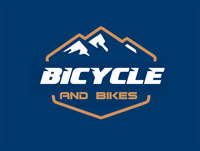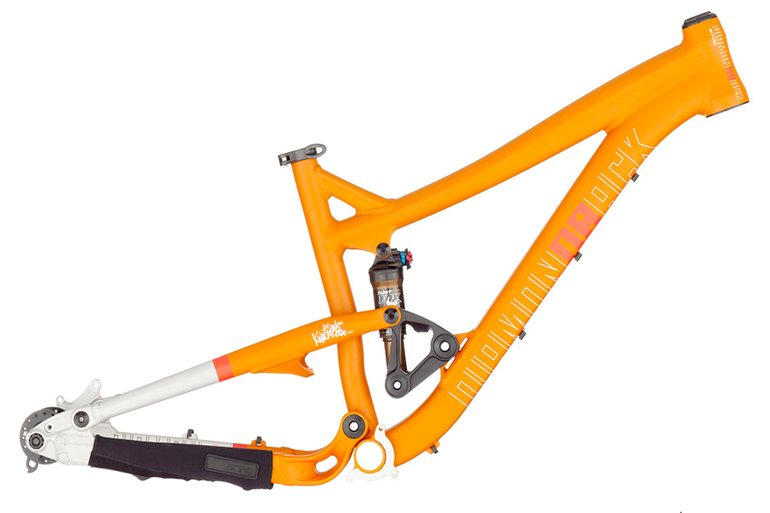Buying a Mountain Bike
All the Factors That You Should Consider

When Buying a Mountain Bike Make Sure You Ask These Important Questions.
Buying a mountain bike can be an exciting yet complex process.
With the myriad of styles, designs, and features available, it can be daunting to find the one that’s just right for you.
The perfect mountain bike should align with your riding style, the terrains you plan to tackle, your comfort, and of course, your budget.
From deciding between hardtail and full suspension, choosing the right frame material, considering the wheel size to pondering over the ideal gearing system – there’s much to contemplate.
In the following guide, we’ll help you navigate these considerations, ensuring you’re well-equipped to make an informed choice and find a mountain bike that enhances your off-road adventures.
What Type of MTB Riding Will I Be Doing?
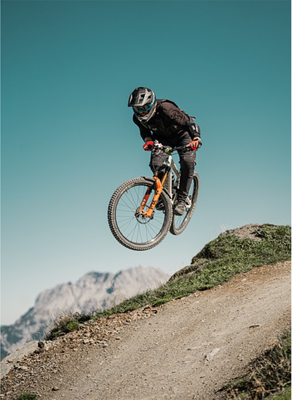 When buying a mountain bike, one of the most crucial aspects to consider is the type of riding you plan on doing.
When buying a mountain bike, one of the most crucial aspects to consider is the type of riding you plan on doing.
Different styles of mountain biking require varying bike features and specifications.
See our detailed page on the different types of mountain bikes here.
Cross-Country (XC)
If you plan on doing a lot of long-distance riding and racing on varying terrain, a cross-country bike is an ideal choice.
These bikes are designed to be lightweight and efficient, with a focus on climbing prowess and speed.
An XC bike typically features less suspension (around 80-120mm) compared to other MTB styles, favoring maneuverability and climbing efficiency.
Trail Riding
This is the most common form of mountain biking.
Trail bikes are designed to handle a variety of terrain and conditions, from uphill climbs to downhill descents.
They typically come with moderate suspension (120-150mm) and offer a balance between weight, efficiency, and downhill capability.
Enduro/All-Mountain
If you enjoy challenging descents, high-speed sections, and technical trails, an enduro or all-mountain bike would be a good fit.
They have more suspension (150-170mm) than trail bikes, allowing them to handle rougher terrain.
Despite their downhill prowess, they’re still designed to be pedal-efficient for uphill sections.
Downhill/Freeride
These bikes are designed for descending steep and technical terrain at high speeds, often used in downhill racing and bike parks.
Downhill bikes feature heavy-duty frames and have the most suspension of all MTBs (170-200mm+), prioritizing stability and shock absorption over weight and climbing efficiency.
Fat Biking
Fat bikes are a unique type of mountain bike designed for riding in snow, sand, and other soft or slippery surfaces.
Their oversized tires provide exceptional traction and float, allowing them to tackle terrains that other bikes can’t.
Recreational
These mountain bikes are perfect for riders who enjoy casual rides on local trails, bike paths, or even around town. They’re designed with comfort in mind, featuring an upright riding position and often including additional features like a suspension seatpost or wider saddle.
Slopestyle
Slopestyle bikes are used in competitions where riders traverse a course filled with jumps, drops, and other features, performing tricks along the way. These bikes are lightweight, durable, and have a moderate amount of suspension, typically in the range of 100-140mm.
Dirt Jump
Dirt jump bikes are designed specifically for dirt jumping and street riding. They are usually very sturdy and feature a simple, low-maintenance design with a single-speed drivetrain, rigid rear suspension, and around 100mm of front suspension to absorb landings from jumps.
Electric Mountain Bikes (E-MTB)
Electric mountain bikes (also known as e-MTBs or pedal-assist mountain bikes) incorporate a motor and battery into their design to help riders with uphill climbs and extend their riding range. They come in various styles, such as cross-country, trail, and enduro, and can significantly enhance your riding experience, especially if you regularly tackle steep or lengthy ascents.
The type of mountain bike you choose should align with your riding style and the terrains you’ll be encountering.
Remember, there’s no one-size-fits-all solution, and the perfect bike for you is the one that meets your specific needs and brings you the most enjoyment on the trails.
Which Type of Suspension Will I Need?
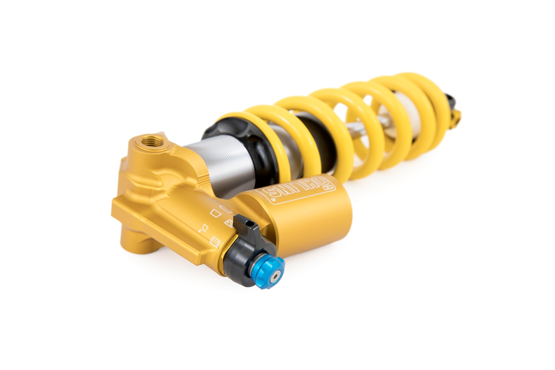 Let’s take a closer look at the various types of suspension configurations you may encounter when buying a mountain bike:
Let’s take a closer look at the various types of suspension configurations you may encounter when buying a mountain bike:
Rigid
This type of mountain bike has no suspension.
While they are less common today, some riders still appreciate the simplicity and lower maintenance of rigid bikes, especially for certain types of riding such as bikepacking or fat biking.
Hardtail
Hardtail mountain bikes have a suspension fork in the front to absorb impacts from the front wheel, but the rear of the bike has no suspension.
This makes them generally lighter, less expensive, and easier to maintain, while still offering some level of comfort and control.
They’re great for cross-country and trail riding.
Full Suspension (Dual Suspension)
Full suspension mountain bikes have both a suspension fork in the front, like a hardtail, and a rear shock to absorb impacts from the back wheel.
This offers better control and comfort when tackling technical or downhill terrain.
They’re great for all types of riding, including trail, enduro, and downhill, but particularly shine in rough, technical terrains.
Soft Tail
Soft tail bikes are a bit of a hybrid.
They have a small amount of rear suspension (usually less than 50mm) provided by the flex of the frame rather than the external shock found on full suspension bikes.
They’re designed to help take the edge off small bumps, and offer a compromise between the efficiency of a hardtail and the comfort of a full suspension.
Frame Material?
The frame material plays a critical role in the performance, weight, and price of your mountain bike.
Here are your main options:
Aluminum
Most mountain bikes are made of aluminum.
It’s a versatile material that can be made stiff or compliant depending on how it’s manipulated by the manufacturers.
Aluminum frames are relatively light, highly durable, and come in at a range of price points.
Steel
Known for its strength, smooth ride characteristics, and durability, steel is often used for hardtail and rigid bikes that are geared toward aggressive riders who need a tough, reliable frame.
It’s heavier than aluminum and carbon fiber but provides a very comfortable ride.
Carbon Fiber
This is a premium frame material, seen on more expensive mountain bikes.
Carbon fiber is lighter than aluminum and steel, and can be formed into complex shapes, allowing manufacturers to fine-tune the ride qualities of individual parts of the frame.
It’s incredibly stiff, leading to efficient power transfer, but can also be designed to flex in ways that dampen bumps.
Titanium
Titanium frames are highly durable, lightweight, and offer a smooth ride similar to steel, but are expensive to manufacture, and thus less common.
Each material comes with its own set of characteristics, so your choice should align with your riding style, budget, and personal preferences.
A test ride can be an excellent way to gauge how a certain frame material or bike feels.
Wheel Size?
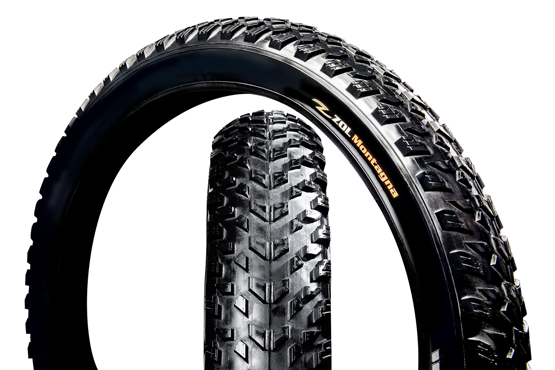 Mountain Bike Wheel Size
Mountain Bike Wheel Size
Wheel size is another key factor when buying a mountain bike, as it influences how the bike handles, rides, and fits.
Here are the three main options you’ll encounter:
26 Inch
This was the standard wheel size for many years in mountain biking.
These wheels are nimble, allowing for quick turning and are often seen on freeride, downhill and dirt jump bikes.
Though it’s less commonly used for new models of cross-country, all-mountain, and trail bikes today, some riders still prefer this size for its agility.
27.5 Inch (650b)
This wheel size bridges the gap between 26-inch and 29-inch wheels.
They offer a balance of responsive handling, rolling efficiency, and quick acceleration.
This size is commonly found on many types of mountain bikes, from hardtails to full-suspension models.
29 Inch
These are the largest common wheel size.
They roll over obstacles more easily and hold speed well once you get them moving, making them great for long rides and covering distance efficiently.
However, they can feel slightly slower to accelerate, and somewhat less agile in tight, technical trails compared to smaller wheels.
You’ll see these on a wide range of bikes, particularly cross-country and trail bikes.
27.5+ (or 650b+)
There’s also a newer size, 27.5+ (or 650b+), which uses wider rims and oversized tyres (about 2.8 to 3 inches wide) on a 27.5-inch diameter wheel.
This creates a larger overall wheel diameter, similar to a 29-inch wheel, and offers increased traction and a smoother ride over rough terrain.
Tire Width?
Mountain Bicycle Tire Width
The width of your mountain bike tires can significantly influence your ride.
The width varies typically between 1.9″ to 2.5″ for cross-country and trail bikes, while downhill bikes may have even wider tires.
Narrow Tires (1.9″ – 2.1″)
Generally, narrower tires roll faster and are less affected by drag, making them a good choice for racing or light trail riding.
They provide less traction and are not as good at absorbing shock from rough terrain compared to wider tires.
Medium Width Tires (2.2″ – 2.4″)
These offer a balance between speed, traction, and shock absorption.
They are versatile and good for general trail riding on a variety of terrain.
Wide Tires (2.5″ and up)
Wide tires offer the most traction and shock absorption, which makes them great for tackling rough, rocky, or loose terrain.
However, they have more rolling resistance, so they won’t feel as quick or responsive on smoother trails or roads.
Plus Size (2.8″ to 3″ )
There’s also the emergence of “Plus-size” tires which are around 2.8″ to 3″ wide.
They offer excellent grip and shock absorption, but can feel bouncy or unstable at lower pressures.
When choosing tire width, consider the type of terrain you’ll be riding most often.
Wider tires can provide more comfort and grip on rough and loose terrain, but if you’ll mostly be on smoother trails or want to maximize speed, a narrower tire might be a better choice.
Also, make sure to check what tire widths your bike can accommodate.
Gearing?
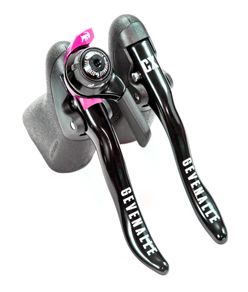 Gearing is a critical aspect to consider when buying a mountain bike as it affects the bike’s versatility and performance on varying terrains.
Gearing is a critical aspect to consider when buying a mountain bike as it affects the bike’s versatility and performance on varying terrains.
Mountain bikes come with a wide range of gears, from single speed to 30 or more.
Single Speed
These bikes have just one gear. They are less complex, lightweight, and require less maintenance.
However, they can be challenging to ride on steep or varied terrains.
Low Gears
Bikes with a large number of low gears (smaller gears in the front and larger gears in the back) are ideal for climbing steep hills and riding on rough terrain, as they make pedaling easier and less strenuous.
High Gears
On the other hand, a bike with more high gears (larger gears in the front and smaller gears in the back) will allow for higher speeds on flat or downhill terrain, but may make climbing more difficult.
Gear Range
You might also hear about the ‘range’ of gears.
A wider range (the difference between the lowest and highest gear) means more versatility for varied terrain.
Modern mountain bikes often use a 1x (pronounced “one-by”) drivetrain with a single chainring at the front and a wide range cassette at the back, providing a good range of gears with simpler maintenance and operation.
The right gearing for you will depend on the type of trails you plan to ride, your fitness level, and personal preference.
If you frequently ride in hilly terrain, more gears could be beneficial, but if you’re sticking to flat trails, a bike with fewer gears may suffice.
Brakes?
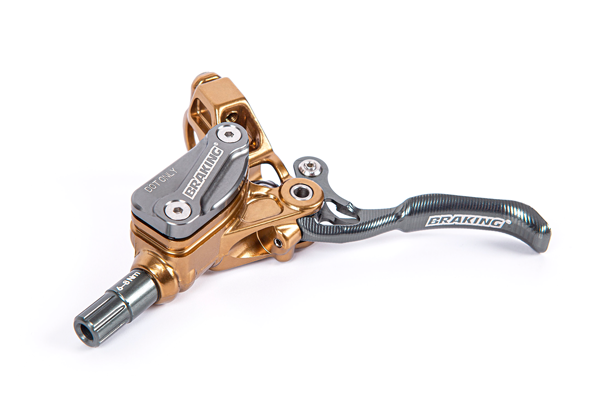 When it comes to stopping power on your mountain bike, there are two main types of brake systems to consider: rim brakes and disc brakes.
When it comes to stopping power on your mountain bike, there are two main types of brake systems to consider: rim brakes and disc brakes.
Rim Brakes
Traditionally, bikes have used rim brakes, where the brake pads grip onto the rims of the wheels to slow down the bike.
Rim brakes are lightweight and relatively simple to repair and replace.
However, they may not perform as well in muddy or wet conditions, can cause wear on the wheel rim over time, and require a fair amount of hand strength to operate effectively.
Disc Brakes
Disc brakes have become the standard for mountain bikes due to their strong, consistent performance in all conditions.
They work by having brake pads that grip onto a brake rotor mounted to the wheel hub.
Disc brakes come in two versions:
- Mechanical (or cable-actuated) disc brakes. These operate with a special brake lever and a cable, similar to rim brakes. They are generally more affordable and easier to service, but they may not offer quite as much stopping power as the following type.
- Hydraulic disc brakes. These use a sealed hydraulic system to actuate the brakes. They offer more stopping power and better modulation (the ability to finely control your braking power), but they’re more expensive and can be more difficult to service.
When purchasing a mountain bike, consider the types of trails you’ll be riding and your budget.
Disc brakes, especially hydraulic disc brakes, are generally recommended for their superior performance, especially on steep and challenging terrain.
However, if you’re just starting out or on a tight budget, a bike with rim brakes can still serve you well and provide a solid starting point.
Correct Fit For Your Body?
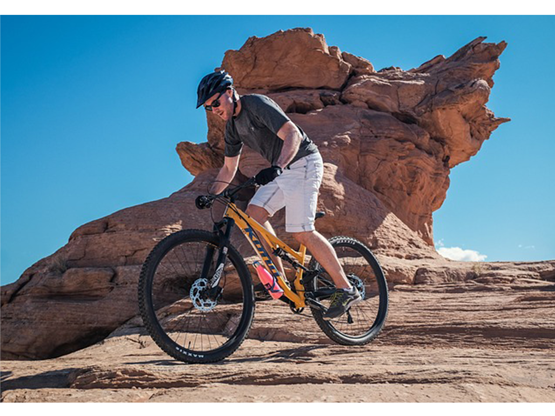 When it comes to mountain biking, ensuring the correct fit is paramount.
When it comes to mountain biking, ensuring the correct fit is paramount.
A bike that fits properly will be more comfortable, more efficient, and more fun to ride.
Here are some key things to consider when checking the fit of a mountain bike:
Frame Size
First and foremost, you need to choose the correct frame size.
This is typically presented in inches (e.g., 14″, 16″, 18″), S/M/L/XL, or in centimeters (e.g., 50cm, 52cm, 54cm).
This varies between brands, so it’s important to check the specific sizing guide for the brand you’re considering.
Standover Height
This is the height of the top tube relative to the ground.
You should have enough clearance between your crotch and the top tube when you stand over the bike with your feet flat on the ground.
Reach
This is the horizontal measurement from the center of the bottom bracket to the top of the head tube.
This determines how stretched out you’ll be when sitting on the bike.
A bike that’s too long will make you overreach to the handlebars, while a bike that’s too short can feel cramped.
Saddle Height
Your saddle height should be set so that you have a slight bend in your knee when your foot is at the bottom of the pedal stroke.
Handlebar Height
Depending on your bike and style of riding, you may want your handlebars level with, or slightly lower than, your saddle.
Remember, it’s always a good idea to get fitted professionally at a bike shop to ensure you’re choosing the right size and to make any necessary adjustments.
Don’t forget about the importance of a comfortable helmet, gloves, and cycling shoes as well.
A good fit isn’t just about the bike—it’s also about the gear that keeps you riding comfortably mile after mile.
Price?
Considering the price is one of the crucial aspects when buying a mountain bike.
Mountain bikes vary greatly in cost, from entry-level models around a few hundred dollars to high-end models that can cost several thousand dollars.
When setting a budget, it’s important to consider the type of riding you plan to do, the features you want, and the durability of the components.
Entry-level bikes often have less durable components and fewer features, but they can be a great choice for casual riders or beginners.
On the other hand, more expensive bikes often feature lighter and stronger frame materials, higher-end components, and advanced suspension systems.
They’re designed for more serious riding, so if you plan on doing a lot of mountain biking on challenging terrain, they may be worth the investment.
Remember, besides the bike, you’ll also need to account for additional costs such as safety equipment (helmet, pads), accessories (hydration packs, tools), maintenance, and possible upgrade costs.
It’s also worth considering that investing in a more expensive bike initially may save money in the long run, as the parts are typically more durable and less likely to need replacement.
In any case, it’s essential to choose a bike that fits your budget while meeting your riding style and needs.
It’s always recommended to test ride several bikes within your budget to see which one feels the best.
And keep an eye out for sales or discounts at your local bike shop or online, as these can make more expensive models more accessible.
Brand Reputation?
Brand reputation is another important factor to consider when buying a mountain bike.
Established brands in the mountain biking industry often have years of experience and innovation behind their products.
They’re likely to offer a wide range of bikes catering to different riding styles, preferences, and budgets.
Popular brands such as Trek, Specialized, Giant, and Santa Cruz, to name just a few, are renowned for their quality, performance, and customer service.
They often have extensive dealer networks too, meaning it’s easier to find parts, get your bike serviced, or have any warranty issues resolved.
Smaller or newer brands can also offer excellent quality and innovation.
Some may specialize in certain types of bikes or use unique design principles.
It can be worthwhile to explore these brands, but keep in mind that availability, customer service, and resale value can vary.
Remember, a reputable brand is likely to stand behind their product with good warranties and after-sales service.
Check out reviews, join online cycling forums, and speak to other riders to get a feel for a brand’s reputation before you make your purchase.
Your local bike shop can also be a great resource for information and advice on choosing the right brand.
